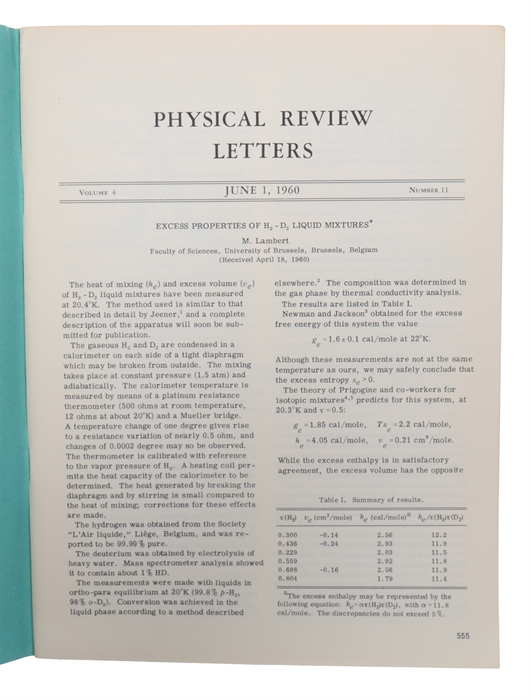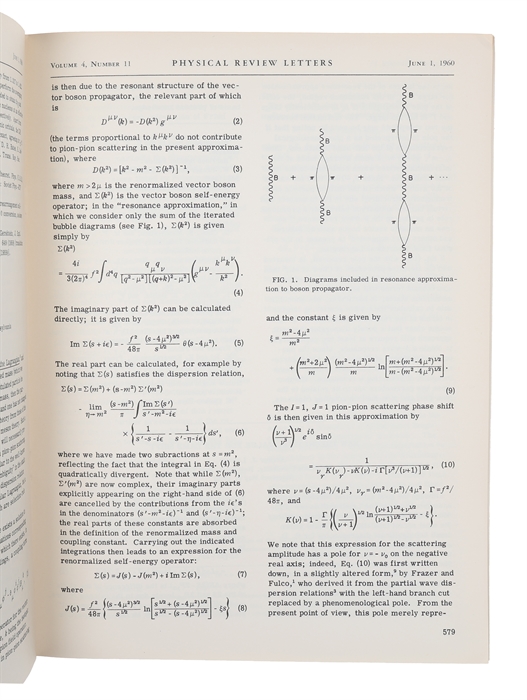THE FIRST OPERATING LASER
MAIMAN, T. H.
Stimulated Optical Radiation in Ruby (+) Optical and Microwave-Optical Experiments in Ruby.
London, Macmillan, 1960; (New York), American physical Society, 1960.
[Stimulated Optical Radiation in Ruby:] Lex8vo. As extracted from Nature. Fine and clean. Pp. 493-4 (one leaf). [Optical and Microwave-Optical Experiments in Ruby:] Lex8vo. Entire issue of "Physical Review Letters, Volume 4, Number 11, June, 1960" in the original blue/green wrappers. A very nice and clean copy. [Maiman:] Pp.564-66. [Entire issue: Pp. 555-598].
First printing of these two fundamental papers in the history of the laser, which described the first operating laser. "[Stimulated Optical Radiation in Ruby] might be considered the most important per word of any of the wonderful papers in Nature over the past century" (Garwin. A century of Nature. P. 107).
"Maiman made the first laser operate on 16 may 1960 at the Hughes Research Laboratory in California, by shining a high-power flash lamp on a ruby rod with silver-coated surfaces. He promptly submitted a short report on the work (Stimulated Optical Radiation in Ruby) to the journal Physical Review Letters, but the editors turned it down." (Ibid.). Maiman turned to Nature where the paper was better received and published on 6 August. It was turned down by Physical Review Letters because Maiman in June 1960 had submitted a paper with a similar topic (Optical and Microwave-Optical Experiments in Ruby).
"While lasers quickly caught the public imagination, perhaps for their similarity to the 'heat rays' of science fiction, practical applications took years to develop. A young physicist named Irnee D'Haenens, while working with Maiman on the ruby laser, joked that the device was 'a solution looking for a problem,' and the line lingered in the laser community for many years" (Britannica).
The development of the laser was essentially built upon the insights discovered by Albert Einstein in 1917 in his "Zur Quantentheorie der Strahlung". Einstein had shown theoretically that stimulated emission of electromagnetic radiation, a re-derivation of Max Planck's law of radiation, would make an atom or molecule to fall to a lower energy state and emit more waves.
The development of the laser is not only of seminal importance in itself, it is also a testament to a period in which many of the achievements within theoretical physics reached in the early part of the 20th century went from being theoretical to applied.
Order-nr.: 44913




